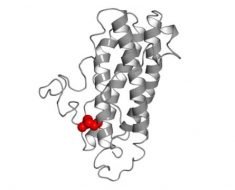Tenapanor, a novel agent that has been submitted to the US Food and Drug Administration (FDA) for approval for the treatment of hyperphosphatemia in patients undergoing dialysis, moved a step closer to approval when the agency granted an appeal to its July 2021 decision that turned down a New Drug Application for tenapanor.
The FDA’s acceptance of this appeal came after a November 2022 vote by the agency’s Cardiovascular and Renal Advisory Committee that by a 10-2 margin with one abstention supported the premise that the benefits of tenapanor outweighed the risks for controlling serum phosphorous levels in adults receiving dialysis when used in combination with phosphate binding agents, the only types of medications that have been approved by the FDA for treating hyperphosphatemia in adults receiving dialysis.
The same panel also voted by a 9-4 margin in favor of the premise that the benefits of tenapanor for controlling serum phosphorous levels outweighed its risks as monotherapy for adults with chronic kidney disease who are receiving dialysis.
A Label Is in the Works
Ardelyx, the company developing tenapanor, said in a statement released on December 29 that the FDA’s Office of New Drugs informed the company that its appeal had been granted and directed the agency’s Division of Cardiology and Nephrology to work with Ardelyx to develop an appropriate label for tenapanor as a treatment for hyperphosphatemia in patients receiving dialysis. The Ardelyx statement said that “a label could reflect an indication for patients whose hyperphosphatemia is insufficiently managed on binder therapy.”
The statement also said that the company is aiming to resubmit its New Drug Application to the FDA during the first half of 2023.
Tenapanor already received approval in 2019 at a somewhat larger 50-mg twice-daily dose for patients with irritable bowel syndrome and constipation. Ardelyx markets this formulation as Ibsrela. If the FDA okays the hyperphosphatemia indication for tenapanor for patients undergoing dialysis, the labeled dosage will likely be 30 mg twice daily, and it will be marketed under a different name, Xphozah.
“This FDA decision is extremely positive for the kidney community and brings us one step closer to having a much-needed novel therapy for the treatment of hyperphosphatemia,” commented Kevin Martin, MD, professor and director of the Division of Nephrology at Saint Louis University, St. Louis, Missouri, in the statement from Ardelyx.
“Despite best efforts with phosphate binders, close to 80% of patients [receiving dialysis] are unable to consistently achieve guideline-established target serum phosphate levels. In clinical trials, Xphozah, with its unique mechanism of action that blocks intestinal phosphate transport, provided clinically meaningful reductions in serum phosphate with one small pill twice a day. As was clear during last month’s Advisory Committee meeting, patients and physicians are anxious to have access to XPHOZAH,” Martin said in his written statement.
Tenapanor Is “Needed”
Tenapanor “is something that’s needed” for patients with chronic kidney disease who are undergoing dialysis and who develop hyperphosphatemia, a very common complication of end-stage kidney disease because it blunts the body’s ability to excrete excess serum phosphorus (also known as serum phosphate), commented Jay B. Wish, MD, medical director of the outpatient dialysis unit at Indiana University Hospital, Indianapolis.
Tenapanor “provides another way for patients to get to the goal level” of serum phosphorus, said Wish in an interview, which ideally is within the normal range of 3.0–4.5 mg/dL, as recommended by the Kidney Disease: Improving Global Outcomes organization. But he also acknowledged that “it’s not for everyone” undergoing dialysis.
Observational evidence indicates that as serum phosphorus levels rise beyond the normal range, patients face an increased risk for death as well as multiple other complications. Most patients receiving dialysis would need treatment with one of the several types of phosphate binders approved for this indication as well as tenapanor to reduce serum phosphorus to levels that are closer to the normal range, Wish noted.
While phosphate binders work, as their name suggests, by being in a patient’s gut at the same time as ingested food and latching onto phosphate to prevent its absorption, tenapanor works by a different mechanism. It acts locally in the gut to inhibit sodium-hydrogen exchanger 3, which inhibits phosphate absorption through the paracellular pathway, the primary pathway of phosphate absorption during digestion. Phosphate is a ubiquitous component of food from both animal and plant sources.
Martin is a consultant to Ardelyx and has been a member of data safety monitoring boards or advisory boards for Applied Therapeutics, Tricida, and Vifor. Wish has disclosed no relevant financial relationships.
Mitchel L. Zoler is a reporter for Medscape and MDedge based in the Philadelphia area. @mitchelzoler
For more news, follow Medscape on Facebook, Twitter, Instagram, and YouTube.
Source: Read Full Article





